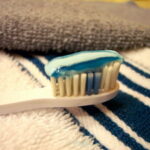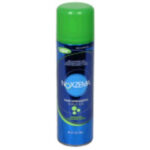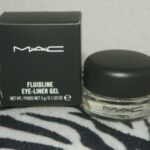The most common cause of skin itching after shower is not the shower – that’s just water in moderation, it’s pretty harmless. It might surprise you to know that one ingredient used in most shampoo, conditioner, toothpaste, shaving cream, shower gel, and ‘soap’ is also the most common skin irritant! What? Why? Why would companies make skincare products which include an ingredient that causes skin discomfort? The simplest answer: because the consumer demands it.
The problem of skin itching after shower, at bedtime, and during the winter is pretty common. While the time of day, the relative cleanliness, and the time of year seem unrelated, they are actually mostly caused by the same thing: sodium lauryl sulfate.
The connection and the cause is sodium lauryl sulfate, a chemical derived from coconuts. Now you’re thinking I’m a kook, a crunchie, a goofball, or an alarmist. I’m not. Let’s disprove these unspoken accusations with a bit of science – then we can move on to the solution and you can stop your skin itching after shower.
The Science
Sodium lauryl sulfate is used in laboratory testing to damage the skin’s natural barrier function. One of the most important functions of skin is to keep things out. Things like chemicals, bacteria, and viruses would have unfettered entry into our bodies if it weren’t for our skin. When a scientist wants to see what happens if a particular chemical does get in, they reach for sodium lauryl sulfate.
The damaging effect of sodium lauryl sulfate on the skin is objectively measurable – scientists don’t ask, “Is your skin itching after shower?” They measure TEWL (trans epidermal water loss) to see how much water the skin is letting out. They also test for erythema, which means skin redness, by measuring the light that is absorbed and reflected. The final common measure is stratum corneum hydration, which measures the hydration of the stratum corneum (a skin layer) by electrical conduction. One study (J Am Acad Dermatol. 1994 Jun;30(6):944-9) showed that the damage caused by sls took 17 days to heal!
The Consumer’s Role
Why do manufacturers use sls if it causes not only skin itching after shower, but also exaggerates allergic reactions (Contact Dermatitis. 2005 May;52(5):239-41), triggers eczema (Skin Res Technol. 2003 Nov;9(4):357-62), and causes canker sores (Compend Contin Educ Dent. 1997 Dec;18(12):1238-40)?
The biggest reason for pretty much everything is money. Consumers buy products containing sls because they like them, companies make them because consumers buy them. Pretty simple.
Sodium lauryl sulfate is a foaming ingredient – it makes toothpaste foamier and shampoo bubblier. Consumers like these feelings – it makes cleansing feel effective. But with more than 41% of the population sensitive to sls (Contact Dermatitis. 2003 Feb;48(2):99-107), is it worth it?
Is there an alternative that doesn’t cause skin itching after shower?
Yes. Centuries before humans discovered that they could extract sls from coconuts to make a foamier soap, they were getting clean using sls-free soaps. Today’s consumers can find sls-free products if they look hard enough and are willing to read the labels. Even products made by ‘natural’ companies can contain sodium lauryl sulfate. That’s because it is a natural product (but so is hemlock.)
When reading the labels of your personal hygiene products, look for sls, sodium lauryl sulfate, or ‘naturally derived surfactants or foaming agents.’ These all usually mean the same thing – your skin itching after shower.





